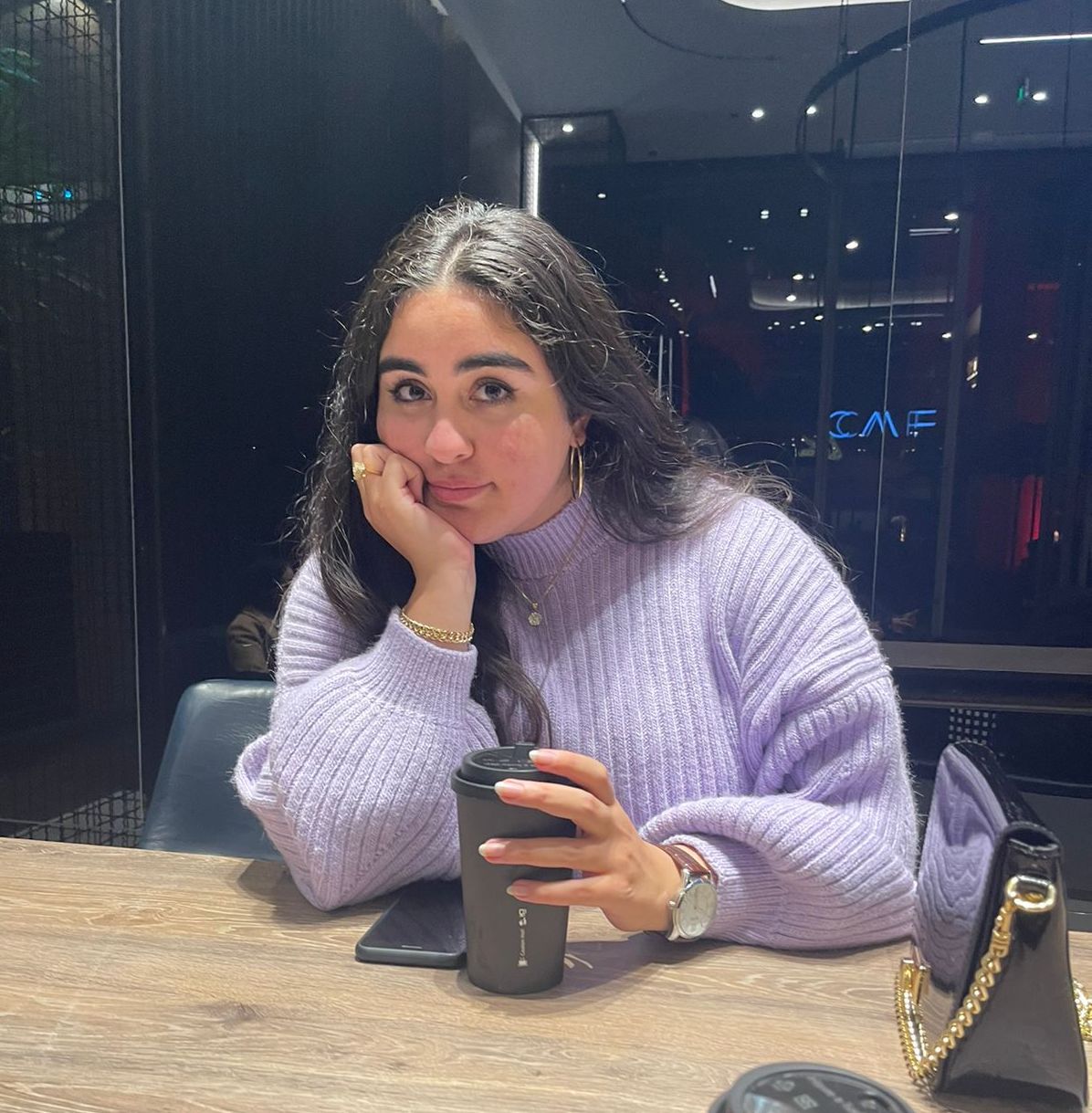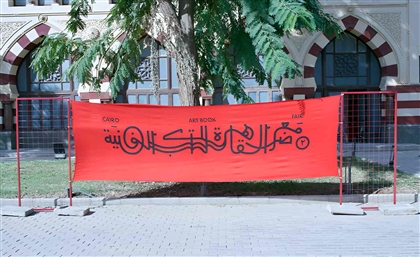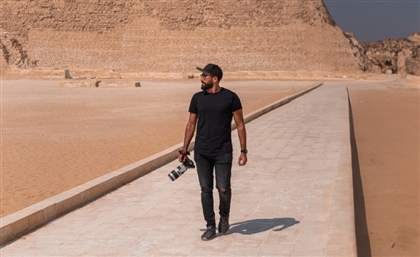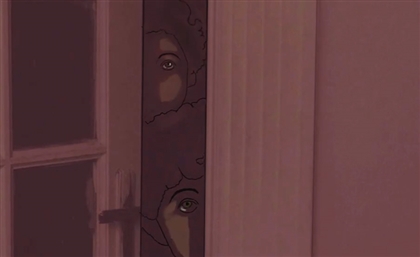An Iconic Dancer and Dissident: The Untold Story of Tahiya Karioka
Karioka’s legacy is far bigger and more profound than her artistic pursuits, for they were not the end, only the means.
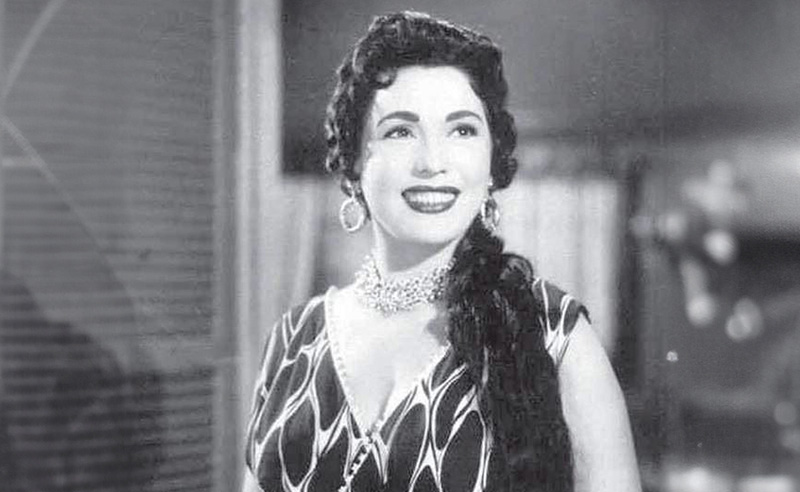
A communist, weapons smuggler, pro-Palestine advocate and former political prisoner…this is the untold story of Egypt’s dance icon, Tahiya Karioka.
-615cc961-942d-4ba1-88e3-a2a514a64fb8.jpg) Born in 1915 in Egypt’s Ismailia, Tahiya Karioka emerged from humble beginnings, her path destined to intertwine with the forces of liberation. From an early age, her fiery gaze and unwavering resolve hinted at the remarkable journey that lay ahead. Yet, it was not until her teenage years, amidst the swirling winds of political unrest, that she discovered her true calling.
Born in 1915 in Egypt’s Ismailia, Tahiya Karioka emerged from humble beginnings, her path destined to intertwine with the forces of liberation. From an early age, her fiery gaze and unwavering resolve hinted at the remarkable journey that lay ahead. Yet, it was not until her teenage years, amidst the swirling winds of political unrest, that she discovered her true calling.
The iconic performer, a household name across the Middle East to this day, has led a life rich in art and rebellion. While most remember her for her impressive filmography and world-renowned dance skills, Karioka’s legacy is far bigger and more profound than her artistic pursuits, for they were not the end, only the means.
Violent Beginnings & A Thirst for Freedom
-c3b931c3-6f64-4b66-8e84-98320cf59395.jpg) Tahiya Karioka’s vehement hatred towards injustice began during her childhood. Her father, Mohamed Ali Elnedany passed away when she was a young child. Left in the care of her half-brother, Ahmed Ali Elnedany, Tahiya endured unimaginable mistreatment, including being treated as a slave and subjected to chains. Despite her desperate attempts to escape, she faced further torment, including the traumatic act of having her hair forcibly shaved. However, fate intervened, and with the help of her nephew, Osman Elnedany, Tahiya eventually fled to Alexandria, then Cairo, for sanctuary.
Tahiya Karioka’s vehement hatred towards injustice began during her childhood. Her father, Mohamed Ali Elnedany passed away when she was a young child. Left in the care of her half-brother, Ahmed Ali Elnedany, Tahiya endured unimaginable mistreatment, including being treated as a slave and subjected to chains. Despite her desperate attempts to escape, she faced further torment, including the traumatic act of having her hair forcibly shaved. However, fate intervened, and with the help of her nephew, Osman Elnedany, Tahiya eventually fled to Alexandria, then Cairo, for sanctuary.
In Cairo, Tahiya sought refuge with Souad Mahasen, a renowned nightclub owner and artist. Although initially denied employment due to the nightclub's disreputable nature, Tahiya's talent and charm caught the attention of Suad's associates and friends who frequented her home. Recognising Tahiya's potential, they urged Suad to include her in the shows as a chorus girl, an opportunity that Suad reluctantly accepted.
Tahiya's undeniable talent soon caught the eye of Badia Masabni, owner of Cairo’s most prestigious ‘salon’; Casino Opera. Impressed by Tahiya's skills, Badia offered her a position in her troupe, and Tahiya embraced the stage name Tahiya Mohamed. As she gained experience, she delved into the captivating Brazilian Samba dance known as the Carioca, solidifying her stage identity as Tahiya ‘Karioka.’
Having forcibly liberated herself from her family’s abuse under the hegemonic and ever-persistent patriarchal banners of ‘3eib’ and ‘haram’, her rising fame and fortune afforded her a front-row seat to the ugly underbelly of Egypt’s ruling family; which wielded arbitrary and tyrannical power in collusion with the British colonial forces.
Smuggling Weapons to Freedom Fighters…and Hiding Anwar Al Sadat!
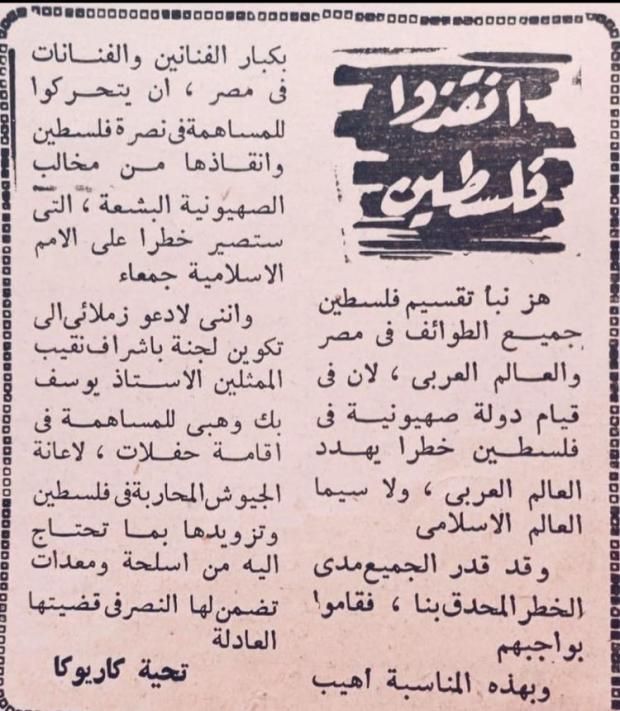
Tahiya’s abhorrence of the regime; a colonial project masqueraded as one ‘for the people’, coupled with her sense of duty as a high-profile personality with considerable influence, led her straight into the camps of the regime’s – militant – opposition forces.
In 1946, Egypt’s Minister of Finance, Amin Othman was assassinated in front of the Old Victorian Club on Sharia Adly in Cairo on the evening of January 5th. The assassination was planned by the Egyptian army officers, including Anwar Sadat, who was the main suspect. Tahiya Karioka, upon finding out, helped him go undercover and hide out in Ismailia. Unfortunately, he was caught and imprisoned for two years.
Sadat, after assuming the Presidency of the Republic after the departure of Abdel Nasser, said to her while honouring her in 1978, “Do you remember when I was working on your sister’s farm?” But she replied to him, saying: “No, President, you were on the run and I was the one who smuggled you in my car.”
In 1948, during the Nakba in Palestine and the lead-up to the 1952 revolution, Tahiya filled up her car trunk with arms and weapons and smuggled them into the Canal Zone during the guerrilla operations of the feda’iyeen. During that time, Ismailia had become the centre for British weapons in Egypt, with shelters and storage units being established in Fayed, Abu Sir, and Abu Sultan.
Tahiya made this trip so often that the ‘drop off’ point was named ‘Tal Tahiya’ [Tahiya’s Hill].
In fact, it was Tal Tahiya where Karioka and Rushdy Aabza, whom she was married to for a couple of months, had their first dates. When Abaza, then an acquaintance, showed interest in Karioka and her proclivities, she convinced him to accompany her to smuggle weapons to the feda’iyeen. Eventually, Abaza took up the job in her stead, and after a while, asked for her hand in marriage.
Edward Said’s ‘Oriental Muse’
-e6452879-ea9e-44e0-b48f-45f6067a37c3.jpg)
In the spring of 1950, Palestinian scholar, author and activist Edward Said – then, a young boy of 14 years – sat in Badia Masabany’s Casino Opera, completely enthralled by Tahiya Karioka’s performance.
“We were about as far from the stage as it was possible to sit, but the shimmering, glistening blue costume she wore simply dazzled the eye, so bright were the sequins and spangles, so controlled was her quite lengthy immobility as she stood there with an entirely composed look about her. As in bullfighting, the essence of the classic Arab belly dancer's art is not how much but how little the artist moves[…]” wrote Edward Said in ‘Reflections on Exile & Other Essays’ (2000), ruminating over that night in Cairo, sequestered in its most renowned nightclub and gaze locked on the indomitable Tahiya Karioka, as the starting point of his thoughts on orientalism.
"Her diaphanous veils were laid over the modified bikini that was basic to the outfit without ever becoming its main attraction. The beauty of her dance was its connectedness: the feeling she communicated of the spectacularly lithe and well-shaped body undulating through a complex but decorative series of encumbrances made up of gauzes, veils, necklaces, strings of gold and silver chains, which her movements animated deliberately and at times almost theoretically.
She would stand, for example, and slowly begin to move her right hip, which would in turn activate her silver leggings, and the beads draped over the right side of her waist. As she did all this, she would look down at the moving parts, so to speak, and fix our gaze on them too, as if we were all watching a separate little drama, rhythmically very controlled, re-configuring her body so as to highlight her semi-detached right side. Tahia's dance was like an extended arabesque elaborated around [the seated singer who shared the stage]. She never jumped, or bobbed her breasts, or went in for bumping and grinding. There was a majestic deliberateness to the whole thing that maintained itself right through even the quicker passages.
Each of us knew that we were experiencing an immensely exciting--because endlessly deferred--erotic experience, the likes of which we could never hope to match in real life. And that was precisely the point: this was sexuality as a public event, brilliantly planned and executed, yet totally unconsummated and unrealizable,” he continued.
Much later, during the nineties, documentary director Nabiha Lotfy helped Edward arrange a meeting with Karioka during his visit to Cairo to give a lecture at the American University in Cairo. According to the Iraqi novelist Ali Badr, Edward Said had the idea of a documentary project through which he would review the stages of his life and the phases of his political and cultural project. He wanted the beginning to be in Cairo, specifically from that moment when he saw Tahiya dancing in Badia’s Opera Casino.
Tahiya in Prison…For Being a ‘Communist’!
-0431cc79-00a5-416d-a014-89bfbff2c372.jpg)
During the 1952 takeover by the ‘Free Officers’, who overthrew the king and gained independence from British rule, Tahiya was secretly married to Iron Guard commander Mostafa Sedky. She was very critical of the Free Officers, and both her and her husband were members of 'Hadtu', a communist national liberation movement. The officers raided their home, where they found inciting books and political leaflets that read, “We expelled Farouk but now we have more than one Farouk.” Some accounts said that they belonged to her, and other accounts said that they belonged to her husband. Both were charged, among others, with plotting to overthrow the regime and imprisoned in 1953.
Journalist Suleiman Shafiq, in 'The Political Face of Tahiya Karioka' tells the story of Kariouka’s imprisonment as narrated to him by leftist professor and writer, Dr. Refaat Al-Saeed explained that Karioka’s first period of imprisonment was one of tangible activity and interaction on the ground. During the 101 days spent in prison, where she chose a nom de guerre for herself, 'Abbas,' she became the voice of prisoners; demanding a stop to torture and demanding basic human rights for all prisoners. She even organised literacy classes for her fellow inmates.
Tahiya also led her first (but certainly not last) hunger strike then, to demand the prevention of torture in prisons.
Tahiya also described that period herself in an interview with ‘Rose Al-Yussef,’ in which she said, "The cell was narrow, dark and pungent. It held both political prisoners and criminals." She also mentioned in the interview that she wrote her memoirs in prison, but security confiscated them.
Eventually, Mostafa Sedky claimed that Tahiya knew nothing of the brochures, which led to her release.
Siding With the Oppressed…
-d0b57336-e476-4dc1-89bb-cbd992cc3944.jpg)
Over the next decades, Karioka would be both vilified and revered for her unfailing moral compass, which urged her to contextualise events in order to stand on the side of the oppressed and never the oppressor.
For example, when the West refused to arm Egypt in 1955, Karioka came out at the forefront of a group of artists who roamed the streets of Egypt, collecting donations during the week of ‘arming the army’ to contribute to an arms deal from the Eastern bloc. Tahiya and Umm Kulthum, made the largest artist donation, and Tahiya donated nearly all of her jewellery to arm the Egyptian forces.
It was then that Abdel Nasser told her, “You are worth a thousand men.” She replied, “It is all for the best of Egypt, President.”
In 1968, Karioka staged a sit-in in front of the door of Cairo's Miami Theatre after Shaarawi Gomaa, then Minister of Interior, decided to ban the play ‘Kadabin Al-Zaffa.’ After exhaustive negotiations, the play was cleared, but after over half of the script was altered.
During the ‘October War’ in 1973, Karioka was the senior volunteer nurse in a hospital, often orchestrating and regulating the treatment of Egyptian soldiers during the war to reclaim Sinai.
When the First Intifada was sparked in Palestine during 1987, Karioka refused to remain in Cairo, joining a convoy of other Arab artists and heading to Palestine despite the Mossad’s continuous threats to bomb the ship they were taking towards Gaza’s coast.
In 1988, Tahia went on another hunger strike, as part of the artists’ sit-in at their union to protest the amending Article 103 of the Trade Union Law, which allows the government to interfere in the affairs of the union, a struggle documented by director Youssef Chahine in his film ‘Alexandria Again and Again.’
When asked, “Are you not afraid of death?” Karioka replied: “Not at all...What is important is for the new generation to know that those who preceded them sacrificed everything for the sake of their principles.”
Her hunger strike was only stopped by the intervention of President Hosni Mubarak, who called the union’s headquarters and told her: “Do you want people to say, that you lived and ate during Farouk, Abdel Nasser, and Sadat’s eras and then died hungry during Mubarak’s?!”
Karioka led an illustrious career as a performer, gracing theatre stages and silver screens with powerful roles and enchanting dances. Unlike many of her peers, Karioka never shied away from political roles but welcomed them, thriving in spaces where she could engage with social and political issues. As evidenced, she firmly believed that art was a political tool and that it was her duty, above all else, to be in solidarity with the oppressed, especially when it cost her.
- Previous Article Italian-Palestinian Duo No Input Debuts Eponymous Electro EP
- Next Article Egyptian Embassies Around the World
Trending This Week
-
Dec 12, 2025







